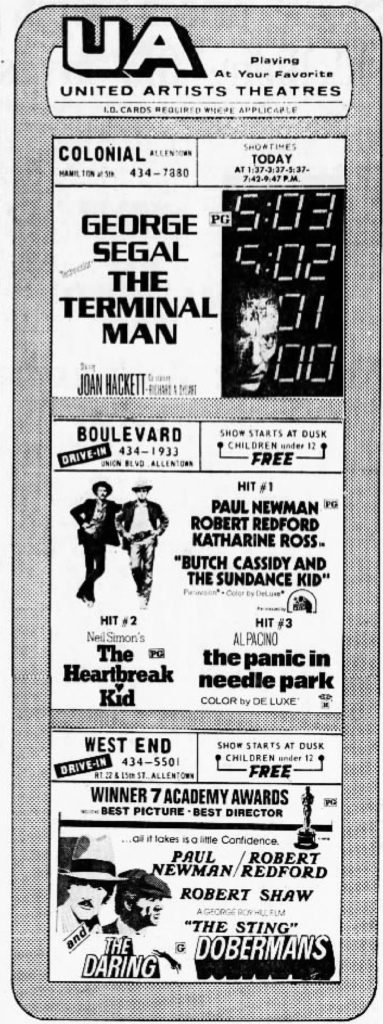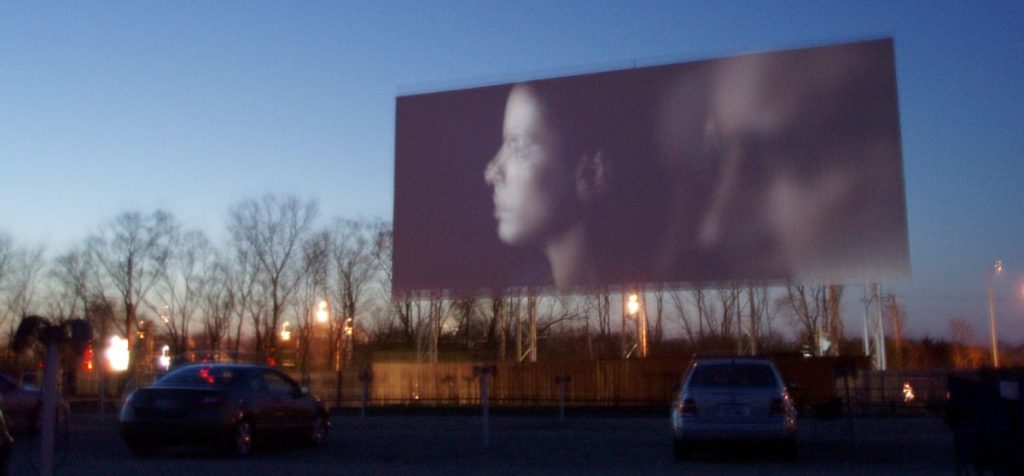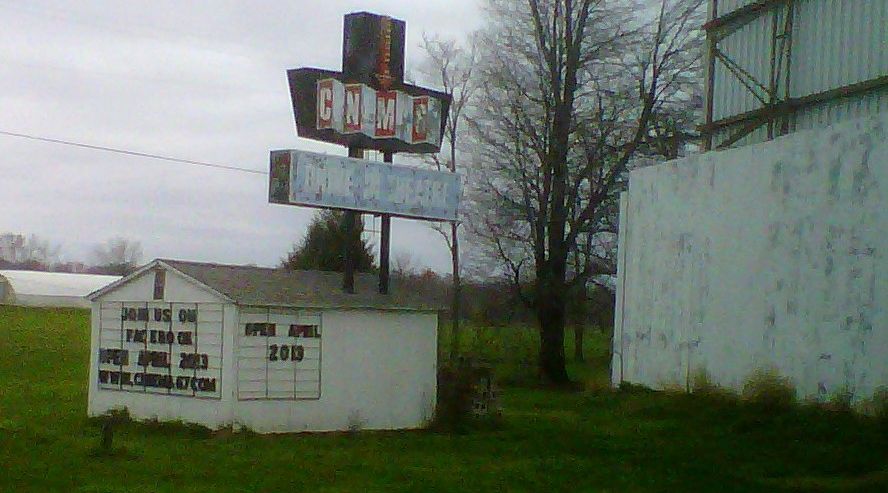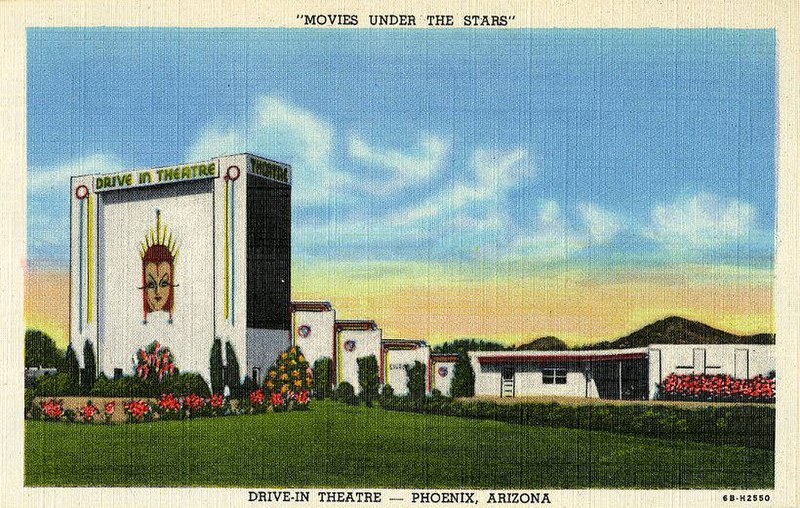Jim-Bob Goes to the Drive-In
Never mind Moms and apple-pie, drive-ins are perhaps even more of an American archetype, one that could only ever be accepted in a land where the automobile is king. Of course, there are other reasons why they never became a part of the post-war landscape in Europe – except, bizarrely, in Denmark, which still has at least five operating. Firstly, there’s the issue of land: a drive-in occupied a large chunk of space, and sits more or less redundant during the day, since you can’t start showing films until after dark. Try that in Britain, and you’d find houses being built in screen two by the end of the week. Indeed, in Central London, you’d probably find people prepared to pay admission, merely to find somewhere to park. There’s also the thorny issue of weather, since going to the drive-in is, basically, a fair-weather spectacle – you don’t want to be watching through your windscreen wipers, even if it would add a certain atmosphere to something like Twister.
No: the dry, wide-open frontiers of the United States are the perfect place for drive-ins. The first opened on June 6 1933, in Camden, New Jersey – the price of admission was a quarter per car, plus a further 25c. per occupant, and the opening movie was Wife Beware. From here, their growth was explosive, reaching a peak in 1958, when there were almost five thousand. To put that figure into some kind of context, there were only about 12,000 indoor screens at that time. Some of them were huge – the Troy in Detroit, Michigan and the Panther of Lufkin, Texas could both hold three thousand cars – and all kinds of other gimmicks were incorporated to lure in traffic…and indeed, in at least one case, air-traffic. During the late forties, Asbury Park, New Jersey had a “fly-in” with room for 25 airplanes as well as the more usual methods of transport.

Nowadays, however, they are a dying breed. The rise of the multiplex has meant a steady and almost irrevocable decline in their numbers, and it’s not hard to see why; when compared for things like comfort, sound and vision, the results all weigh heavily against them. Their advantages – such as the ability, shall we say, to make your own entertainment during the film – have largely been equalled or surpassed by home video, and thus drive-ins will likely go the way of tail-fins, malt-shops, bee-hives and many other items of hyphenated pop culture. Arizona may be bigger than Britain, but only has five left, and the number nationwide is only around 800 or so.
But at least I can say I’ve now been to one; the Glendale 9-screen, Arizona’s biggest, located on the upper West Side, on the other side of the railway tracks — but not so far away on the other side, as to prevent the occasional train-horn from punctuating proceedings. You certainly can’t quibble over the price: $5.50 per adult (and however many you can smuggle in the boot) gets you two just-gone features, in our case Valentine and The Pledge. The former had barely arrived in “proper” cinemas two weeks ago, but had already dropped through them faster than a Brick Lane curry, and was languishing at Glendale in front of an audience of precisely two cars. Oddly, the equally lame Dracula 2000 was doing healthy business elsewhere in the complex, suggesting that there is such a thing as a genuine drive-in movie, independent of its success elsewhere.
The first task though, is finding your screen. After going past the one of the toll-style admission booths, you are confronted by an almost totally dark maze of fences and bollards, surround the central projection and concession buildings, with little in the way of signs to direct you to which part of the field you’re meant to park. After patiently queuing for a while behind some other cars, waiting in front of a blocked-off opening, we took a detour through two other screens (doubtless to the annoyance of their occupants – it’s bad enough in a normal cinema, imagine if people came in making engine noises and shining bright lights around) and finally found our spot.
In early versions of the drive-in, sound was provided by speaker posts mounted outside the car which you pulled into your vehicle to hear the movie. These were notorious for their low-fi-ness, and were perpetually having to be replaced because people tended to drive away, forgetting they still had the speakers inside. Nowadays, technology has moved on, and you now tune your radio to a different low-powered FM station for each sceen (105.1 in our case), broadcasting from the centre, and can therefore enjoy all the quality your car stereo can deliver. At least, that’s the theory: the reality at Glendale was crackly, scratchy and teetered on the edge of inaudibility, turning even the best Blaupunkt into a fading battery portable, located in the middle of the Himalayas. Perhaps it was just a touching tribute to earlier efforts.
The visual qualities also left more than a little bit to be desired. Going to see a horror movie, while sitting in the middle of an almost-deserted parking-lot certainly adds to the ambience, the large amount of creeping around in the darkness doesn’t come across well, particularly when seen through a tinted windscreen (not really an optional extra in Arizona). The illustration below shows the sort of thing you can expect, so you would do well to choose your movie with caution – pick a film which takes place either during broad daylight, or in an operating theatre.

There was something kinda cool about being able to set your seat to its most laid-back position, and if the film wasn’t up to much, you could talk without disturbing anyone else. Well, within reason – our co-habitants had their young children sitting on the roof of their vehicle, and they were not exactly stunned into silence by the qualities of Valentine. It would have been amusing to be a fly on the windscreen of that car for the journey home, and hear the explanation of the scene where Denise Richards poured candle wax onto a guy’s genitals. Young minds are just so inquisitive.
The interval between movies provided an opportunity to head for the concession stand, which was even more deserted than the screen we’d left; after a few minutes of steadily increasing straw-rattling, I was just about to climb over the counter and help myself, when a salesperson appeared, in a manner reminiscent of the shopkeeper in Mr. Benn. According to Chris, at weekends, when business is likely to be much brisker, this is a focal point of the whole event, with the actual movies reduced to a secondary role to socialising, hanging out, gossiping and other traditional teenage pursuits – such as gang warfare. Even if, admittedly, the usual refrain of “this film’s crap, let’s slash the seats!” becomes rather self-destructive when you’re in your own car.
And it is these facets which will decide whether the drive-in has any future. The advance of technology, in areas such as LCD screens, could provide a means of matching indoor cinemas for quality, but the crux of the matter is, for them to survive, they need to attract a new generation of attendees who can already watch movies in any number of other ways. Their success in doing so will determine whether their viability extends into the 21st century.

